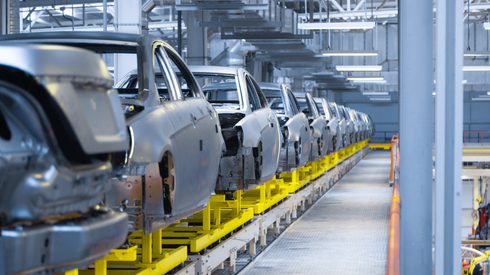In its latest address on carbon dioxide (CO2) emission target reductions by the vehicle transport industry on Friday January 28, Eric-Mark Huitema, director general of the European Automobile Manufacturers’ Association (ACEA), called for “binding targets for charging infrastructure” to support the legislation proposed by the European Commission late last year.
“Any changes to the ambition level of the CO2 targets must be reflected in the infrastructure deployment targets for national governments,” Huitema wrote.
The commission’s proposal targets a 55% cut of CO2 emissions by 2030 compared with 2021 levels, envisaging 3.9 million charging points that will have to be deployed by the end of the decade to support the transition to EVs across the bloc. This compares with a current estimate of some 200,000 charging points.
ACEA believes the 2030 commission estimates to be insufficient, saying its emission target will “only be achievable with a massive ramp-up of infrastructure to reach a total of some 7 million chargers.”
Sources at original equipment manufacturers (OEMs) told Fastmarkets that uneven availability of charging stations, such as outside cities, and slow installation rates can have a major impact on consumer behavior when it comes to switching to electric vehicles (EV) from internal combustion vehicles.
“If ambitious CO2 targets are not accompanied by realistic infrastructure deployment targets, or if their timing is not aligned with what is practically possible, the social and economic impact of a mismanaged transition to zero-carbon mobility will be huge,” ACEA said.
The group identified potential issues for consumers that could hinder the pace of the energy transition of the vehicle transport sector, including so-called mobility poverty – in other words, if the average cost of EVs rises beyond affordability for the typical consumer.
This has been a topic of concern among OEMs, given that up to one-third of the total cost of an EV is represented by the battery pack alone.
While battery costs have been driven down over the past decade, the multi-fold surge in battery raw material prices over the past year – including for lithium, cobalt and graphite – could affect the price for new vehicles.
Fastmarkets’ price assessment for lithium carbonate 99.5% Li2CO3 min, battery grade, spot prices cif China, Japan & Korea was $44-47 per kg on January 27, more than six times $6.00-7.50 per kg in mid-January 2021.
The price assessment for cobalt, standard grade, in-whs Rotterdam, was at $34.30-34.80 per lb on February 3, up by 61.98% from $20.50-22.15 per lb on the same date last year.
Fastmarkets’ assessment of the price for graphite, spherical, 99.95% C, 15 microns, fob China, was $3,100-3,300 per tonne on January 27, up by 24.27% from $2,350-2,800 per tonne on July 1, 2021.
Ongoing supply chain component shortages, such as that of microchips, has also been flagged as a liability for Europe. ACEA noted the second-hand vehicle market saw a bumper 2021, mainly due to the chip shortage affecting output and availability of new vehicles.
Sales of passenger cars in the European Union fell for a sixth consecutive month in December, decreasing by almost 23% year on year. Double-digit declines were recorded in all major producer countries, including Germany, France, Italy, Spain and the United Kingdom.





